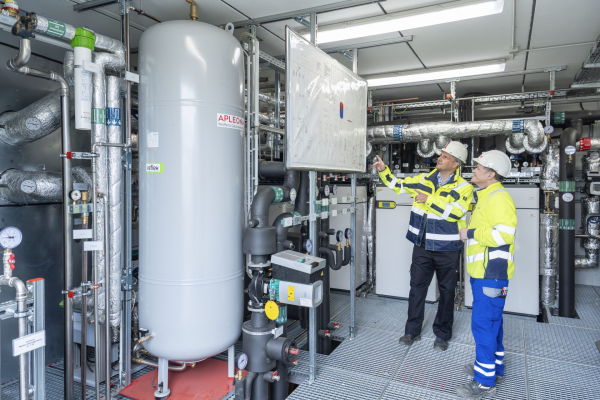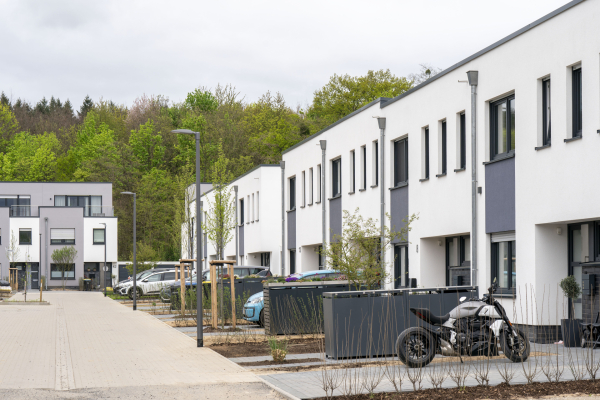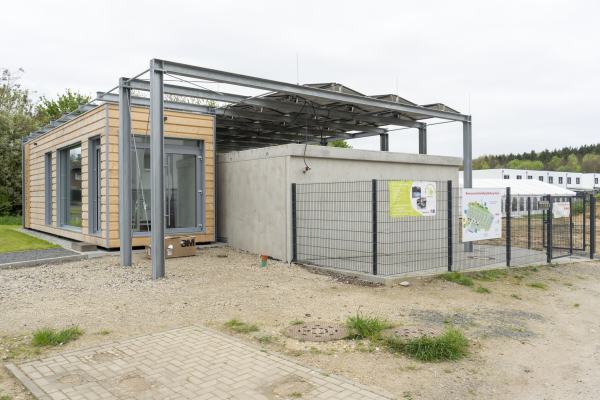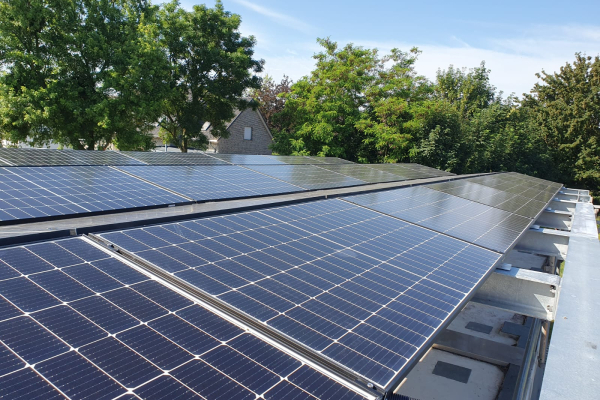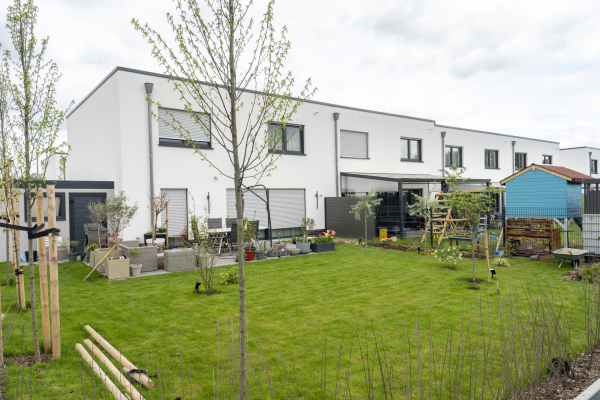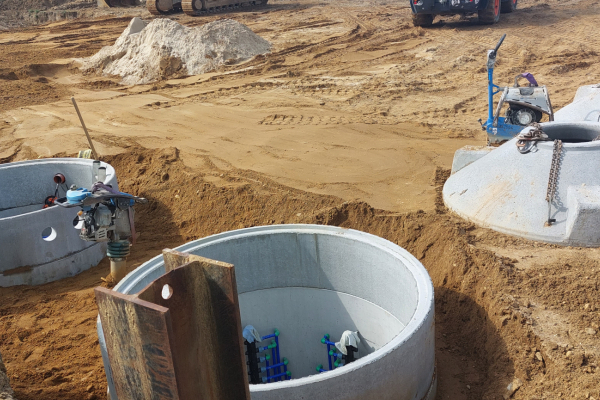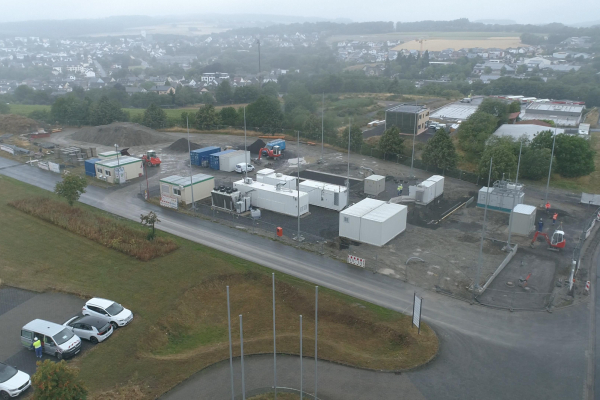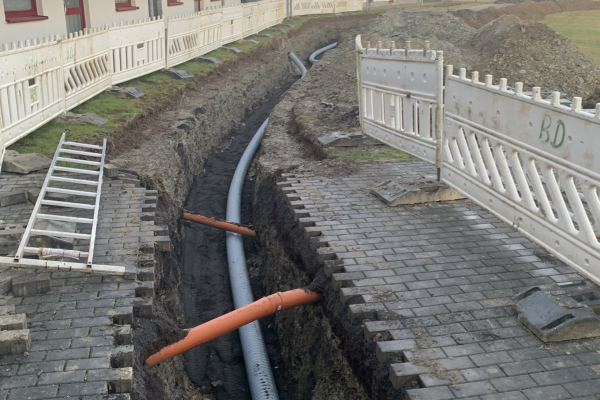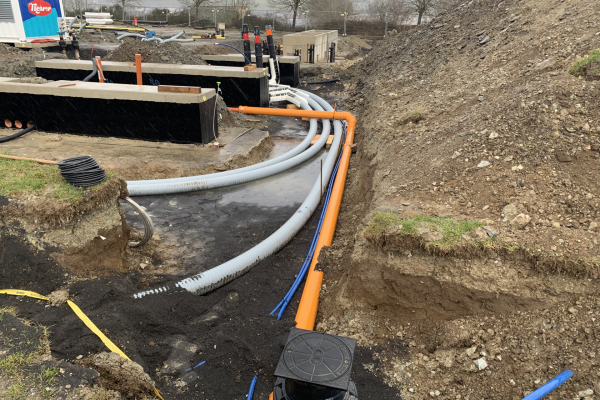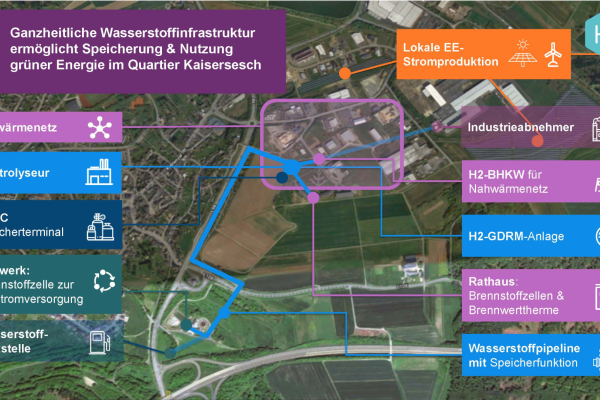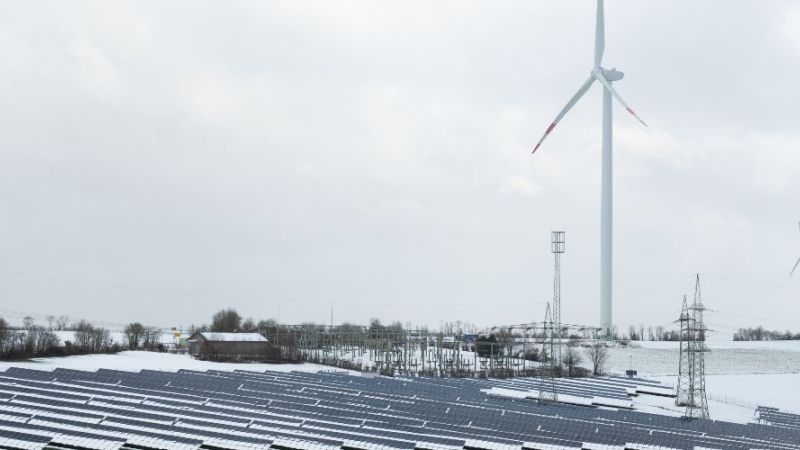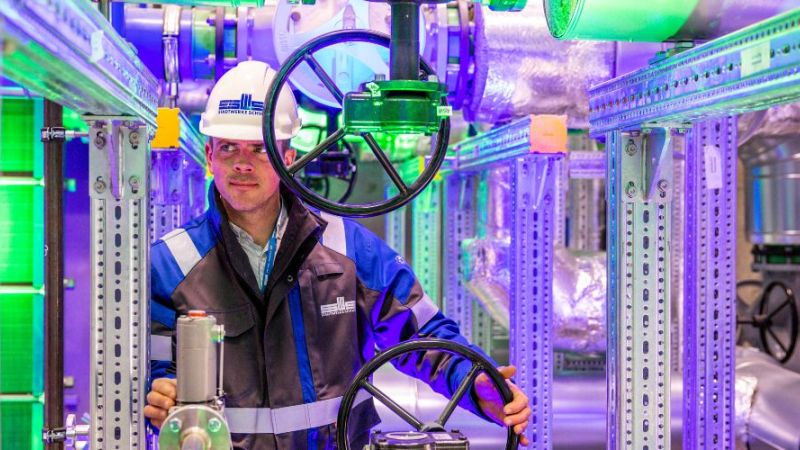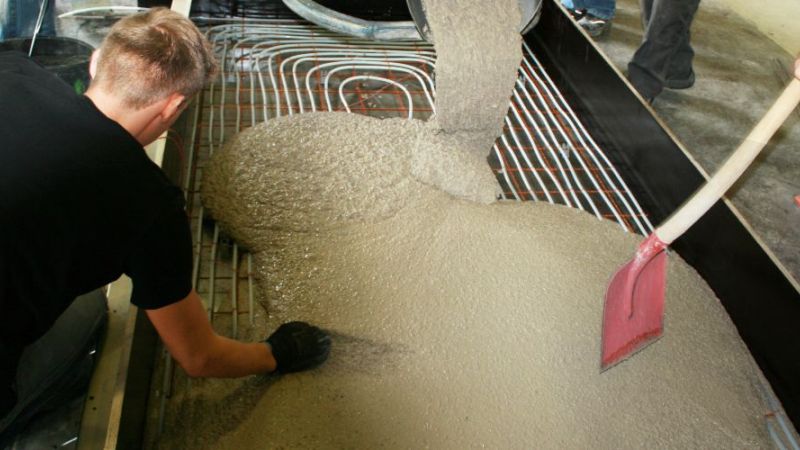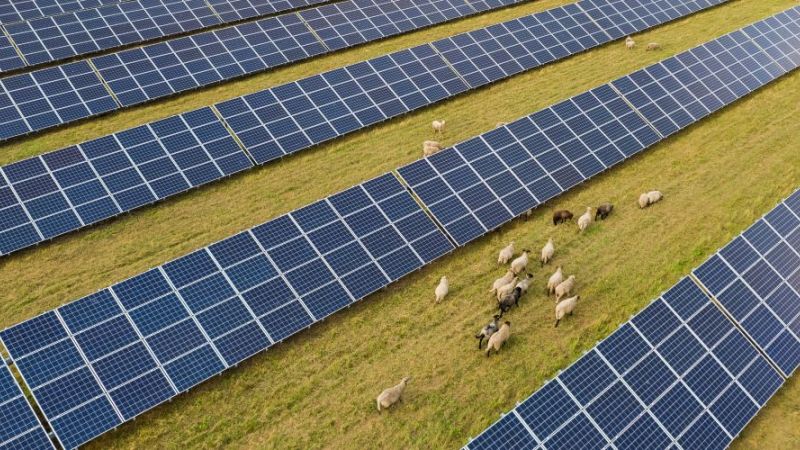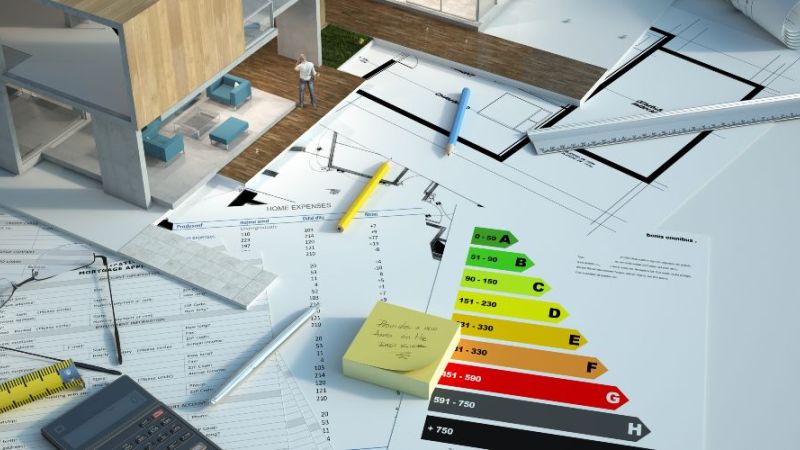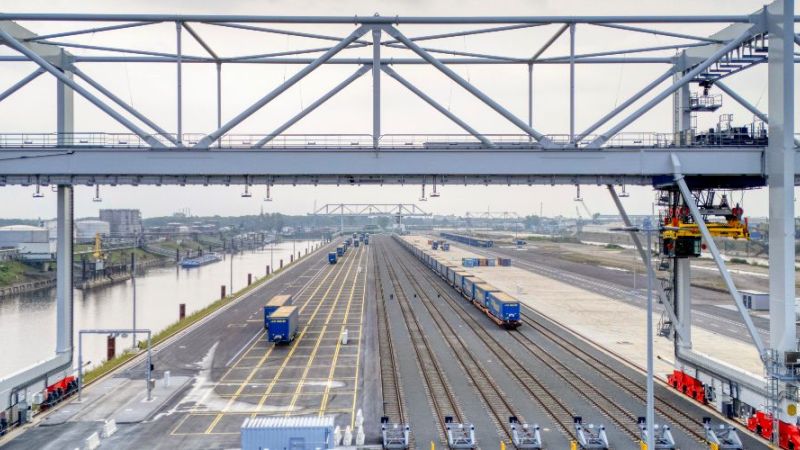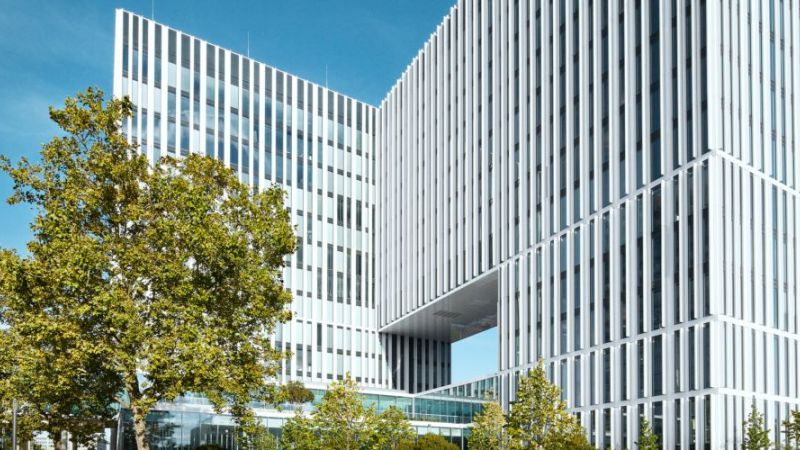 © E.ON SE
© E.ON SE
Living Lab for the Energy Transition
Energy-Optimized Neighbourhoods: SmartQuart Shows How it’s Done
Whether in the city or the country, new or existing buildings: the SmartQuart living lab for the energy transition shows that diverse neighbourhoods can be supplied with climate-friendly energy. The energy supply system was recently officially put into operation in the new development in Bedburg.
In three districts in North Rhine-Westphalia and Rhineland-Palatinate, the Smart Quart consortium has been developing new approaches and solutions for the planning, construction and operation of energy-optimized districts since 2020 - with the intensive involvement of local people and decision-makers. The aim is to use information and communication technologies (ICT) to optimally control the generation, conversion, storage and distribution of renewable energies for the supply of electricity and heat - both within and between neighborhoods.
In general, local authorities play an important role in implementation. They laid the necessary framework conditions for the implementation of climate-friendly districts at an early stage. In addition to the small-town mixed-use area in Kaisersesch and the digital, urban district in Essen, the new development in Bedburg-Kaster is also part of the project.
Renewable energy for a former open-cast mining area
With around 110 residential units currently spread across detached houses, semi-detached houses and terraced houses, the Bedburg-Kaster resource conservation estate is now serving as a showcase district for the energy transition. This is partly due to the energy supply, which is based on renewable energy and intelligent ICT networking.
The district's own PV system and a wind turbine with a direct connection supply green electricity, which residents can also use in their buildings in the evenings or when there is no wind thanks to battery storage. The district also has a connection to the public electricity distribution grid. Green heat is provided by the combined generation of energy from wastewater heat recovery, heat pumps, a heat buffer storage tank with a capacity of 10,000 liters and an area of around 400 square meters with geothermal collectors. In addition, there is a low-temperature network with sliding temperatures, which avoids unnecessary energy losses and offers residents additional cooling for their homes in summer. All components are intelligently controlled from the district's own energy center. This is where the entire energy and communication infrastructure comes together and makes the efficient and almost completely climate-neutral energy supply possible in the first place.
Interim review with Robert Habeck
In September 2023, the project consortium led by E.ON SE presented an interim assessment of the key results of the project at Bedburg Castle. In an exclusive video message for the participants at the event, Federal Minister for Economic Affairs, Dr. Robert Habeck, commented on the SmartQuart energy transition living lab: “Here, we are showing how climate-neutral energy supply can be implemented in concrete terms into the neighbourhoods and how the citizens can be involved at every step, how they can actively participate in the planning and thus make the project better and better. The project partners also show exactly how sector coupling works and that it helps to supply entire neighbourhoods with renewable energy.”
Kaisersesch: Hydrogen for a Small-Town Mixed Area
The energy transition is also moving forward in the Kaisersesch municipality – as part of SmartQuart: “We have built a hydrogen-based neighbourhood and are demonstrating the entire hydrogen value chain. We are feeding the hydrogen produced into all sectors,” explains SmartQuart technical project manager Jürgen Hammelmann from Westenergie. For example, the first German high-pressure hydrogen pipeline was built and approved by TÜV.
As soon as the infrastructure ist fully operational, in Kaisersesch electricity from renewable generation will be converted into hydrogen in a power-to-gas plant. Local industrial companies will then use this for their processes. A combined heat and power plant (CHP) will also supplied with hydrogen. This will feed the energy into a local heating network that has been converted for this purpose. The existing CHP plant was converted to use hydrogen as an energy carrier.
A hydrogen filling station, which is currently being planned, is another future consumer of the hydrogen. The H2 microgrid also includes storage options. On the one hand, hydrogen can be temporarily stored in the pipeline that has been built. On the other hand, LOHC technology can be used, in which the hydrogen is bound to a viscous oil-like substance, making it safe and easy to transport.
In the next step, the individual sectors and neighbourhoods in the living lab for the energy transition will be networked via the so-called SmartQuart hub. This energy management system networks the neighbourhoods and optimizes the energy flows. In this way, energy can be used as efficiently as possible locally or shared with other neighbourhoods on a balance sheet basis.
In addition to Bedburg and Kaisersesch, the digital, typical urban neighbourhood in Essen is also part of the network. Here, several existing properties are being virtually combined in order to realize solutions for a sustainable electricity and heat supply in various scenarios. The neighbourhood shows how energy can be used efficiently even in the highly dense areas of large cities, thus making a significant contribution to the energy transition.
Living labs for the energy transition put innovations into practice
Funded by the German Federal Ministry for Economic Affairs and Climate Protection, the living labs for the energy transition test innovative technologies in practical applications under real conditions and on an industrial scale. Experts can then use the experience gained in the projects to decisively advance the far-reaching transformation of the energy system in Germany toward climate neutrality.
On the topic of “energy-optimized neighbourhoods”, six other living labs for the energy transition have already been launched in addition to SmartQuart:
JenErgieReal – Energy-optimized living lab in Jena using real-time scalable energy storagDELTA – Darmstadt Energy Lab for Technologies in Application
GWP – Large-scale heat pumps in district heating networks
IW3 – Integrated heat turnaround Wilhelmsburg
TransUrban.NRW
GeoSpeicherBerlin
In the area of "sector coupling and hydrogen technologies", six living labs for the energy transition have also been launched. Further information and an overview of all projects can be found at energieforschung.de.

